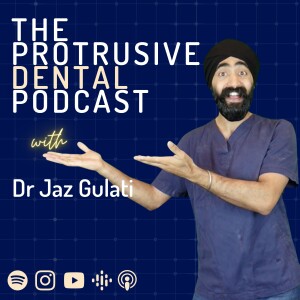
We’ve now come to the last bit of this 3-part Oral Surgery Complication series with Dr. Chris Waith. I'm going to be honest, I have a lot of concerns about Tuberosity Fractures - they scare the bejeebers out of me! We all know that it can be a really nasty complication. Fear not! Dr Waith will teach you how to prevent and manage maxillary tuberosity fracture.
https://youtu.be/ZQuDeViQiX4
Check out this full episode on YouTube
Need to Read it? Check out the Full Episode Transcript below!
“If there's a really tight contact between those three molars, the two teeth you're extracting, just spend a minute skimming the contact points.“ - Dr Chris Waith
In this episode, we discussed about:
Risk factors of tuberosity fractures 1:40How to manage when you hear the crack of the tuberosity 3:57High risks patients 6:35Leaving a loose bone as a space filler in soft tissue 9:07
Join us in our Telegram group! Let us help each other out!
If you loved this episode, be sure to check out the first part! Dry Sockets – How to Prevent and Manage Them?
Click below for full episode transcript:
Opening Snippet: Welcome to group function, where the Protruserati worked together to find good solutions to worthy problems in dentistry with your host, Jaz Gulati...
Jaz's Introduction: Tuberosity fractures are super scary, like, you know, when we did the first group function with Chris Waith about dry sockets, dry sockets don't worry me, okay? When it comes to OACs, Yeah, a little bit concerning, but after that episode, I feel much more confident. But when it comes to Tuberosity Fractures, man, I have to tell you, I'm really worried about causing them. And I've seen on social media people posting these photos, you know, I try to take out the upper left molar, and then the whole premolars and all the molars came out with it. And that is a scary sight. So in this group function, we're going to ask Chris Waith, how to prevent and how to manage that dreaded tuberosity fracture. Let's hit it.
Main Interview: [Jaz]Then the next one is and the last one is tuberosity fractures. Like, this is scary when you see on social media, some you know, sometimes a big group of people posting their tuberosity fractures, and you see the first molar, the second molar and a third molar, come out with this massive chunk of maxilla. I do not want to ever be in that position that must be so stressful and like how do you even begin to have that conversation like you know, we always warn our patients before doing an extraction, maxillary extraction about these kinds of things. But Never Have I Ever warned a patient that look me taking out this wisdom tooth, I might also take out three other teeth while I'm doing this, for example, it's just so rare, unfortunate. So what are the risk factors? How can we manage it when you hear that crack, and so on and so forth.
[Chris]So, I've been in that scenario of having a big unit, I think, if ever, you're taking out an upper six, or upper seven. And if there's a really tight contact between those three molars, the two tooth you're extracting, just spend a minute skimming the contact points out. So drill the contact points, make a physical space in between that tooth and the two neighboring teeth. Because then when you're Elevate, you're much less likely to engage the your neighbor and hopefully less likely to put stress on a wider area of alveolus. I think if you just take in the wisdom tooth out, look for the risk factors. And you know, I sometimes go on when I'm teaching that I say I feel bad now about how we used to teach the undergraduates because there was definitely this mentality where you gave them some notes and just said take that. I'm probably didn't spend long enough saying this is how you should take that type. And I think of parades is one of those where depending where you went, somebody would have put a cryers in your hand or a coupland and would have just said just push back, actually,
view more
More Episodes
Can I Probe This Implant? – GF013
 2022-01-17
2022-01-17
 2022-01-17
2022-01-17
Occlusion Wars II: Beyond Teeth – PDP101
 2021-12-22
2021-12-22
 2021-12-22
2021-12-22
Pascal Magne at BACD Experience – PDP100
 2021-12-15
2021-12-15
 2021-12-15
2021-12-15
Being Unstoppable with Ferhan Ahmed – IC016
 2021-11-05
2021-11-05
 2021-11-05
2021-11-05
012345678910111213141516171819
Create your
podcast in
minutes
- Full-featured podcast site
- Unlimited storage and bandwidth
- Comprehensive podcast stats
- Distribute to Apple Podcasts, Spotify, and more
- Make money with your podcast
It is Free
- Privacy Policy
- Cookie Policy
- Terms of Use
- Consent Preferences
- Copyright © 2015-2024 Podbean.com





